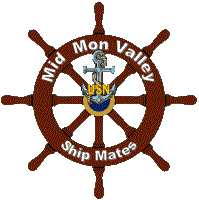
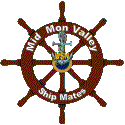

Navy Personal Stories: Naval Story of Patrick Maloy



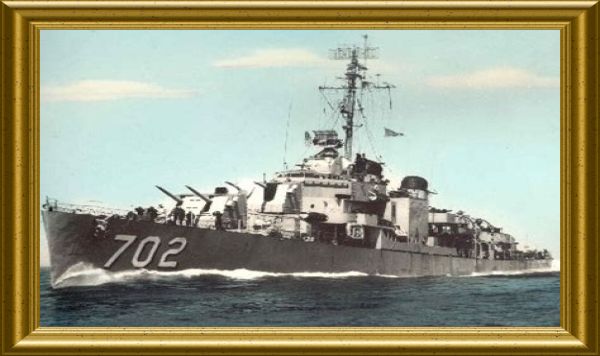
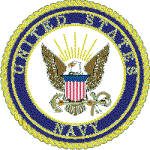
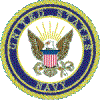

Naval Story of Patrick Maloy

Patrick Maloy HM2


This is my recollection of the 13 years (8 Active 5 Active Reserves). The year was 1970. On the 28th of April I took the Oath of the Enlisted E-1 USNR-R Sailor as a Two By Six Reservists. I had just finished a semester at Duquesne University. In January 1970 was the two year combined drawing for the Draft and my number I believe was 256. The way Vietnam was going and the issues here in the United States and not able to change my Draft classification, I was looking at options.
When I joined, I chose Machinist Mate Striker, why I don’t remember. That November and December I went to Boot Camp, and then my second assignment was in Philadelphia Naval shipyard aboard the USS Hank DD702; for two weeks each! I painted the after engine room of the ship – twice! Down to the Bilge Line! Then about six months later time came for my Active Duty assignments. As a Machinist Mate my chances of being assigned to a PT Boat on the Mekong River which was not what I wanted. Recruitment at the Reserve Center gave me a chance to join the TAR Command (Training and Administration Reserves) which was broadcast to those interested and it sounded better than my first option – Mekong River or a Guaranteed “A” School. After testing I was told that I could choose any RATE in the Navy, I chose Hospital Corpsman. The TAR Program added one year more to the Active Service but State Side Duty and a School was the best choice. Although, being the number two man aimed at by the enemy after the Radioman was eased by being Stateside.
Hospital Corps “A” School was at Great Lakes Naval Hospital. The sixteen week school covered a great deal of general anatomy and Nursing skills needed to be a Hospital Corpsman. Those stories can be told but at a later time.
Active Duty started the 17th May 1971 at the NAS Norfolk Virginia. Two weeks processing and assignment with orders to proceed to NAS South Weymouth, Massachusetts. While at this command I was sent to “A” School for Hospital Corpsman in early 1972 for 16 weeks. The three and a half years at this command was an interesting experience. The men and women attached to this Command Service Member or Dependent taught me a great deal as a young man stepping out for the beginning of the rest of my life. An Air Show was scheduled just before I left for “C” School training in Radiologic Technology at the end of 1974. We had Stunt Fliers and the Navy Blue Angles. I don’t recall the number of days but I assume at least two. The final day of the event a female Stunt Pilot was performing her routine. The Crash Box and Medical Department Personal assigned to the runway, I was there, was placed at an area near the intersection of the two runways. The Pilot started a series of stunts with a fly through in front of the crowed at our far left and when reaching our position did a radical climb almost straight up! It was great! At the top of her climb she rolled over and did a series of tail and wing flips. It was incredible, however, my comment to those around me was that if she can pull out and fly level that would be incredible. I thought she was too low. As it was, no attempt was made to pull up, she nosed in and her wings did a 180 turn to show the bottom of the plane, the flames erupted just as the Fire Crew Member was placing a protective covering over her face.
As for the Medical Department Response, everyone jumped into the Van to race to the accident which was about 100-150 yards away. Ironic was that no one jumped into the Driver Seat. The Senior Medical Officer took control of the vehicle. Prior to leaving NAS South Weymouth I achieved the Rank of E-5 Hospital Corpsman Second Class.
While stationed at NAS South Weymouth there are two events that occurred. The big event was the arrival of the returning POW's from Vietnam. The number and who they may be known is known to someone but my memory fails me. My big event was being chosen as the Corpsman for detachment to Noomans Land Island or No Man’s Land Island of Martha’s Vineyard (SW). The island was previously owned and awarded by a Family (Noomans) to the Federal government as a coast watching site or other uses by the Government. It involved travel by Helicopter from NAS South Weymouth to Newport Rhode Island, then on to the island, for a meeting with the family so they could find graves and markers of their family members buried there, those who had lived on the island. If anyone got hurt it was my responsibility to provide First Aid. It is a beautiful Island with lakes in the middle of the island a beach NW side and cliffs on the East side of the island. We walked through and around the entire island, about four hours on foot. No one got hurt, thank God! I did get a couple of souvenirs. The island had old buildings used at times for watching the Northeast Coast. Later it was used as a strafing target range. Special advanced permission was needed to get within a specified distance or to get on the island. It was a great adventure for a young sailor.
My next assignment was to the “C” School at the National Naval Medical Center, Bethesda, Maryland, Radiologic Technology School. I met Admiral Zumwalt in the Emergency Room as he toured the facilities. There were some incredible experiences and introduction to Radiology Equipment that sparked the imagination. I graduated Third in my class. Pretty good for someone graduating High School 103 of 107. My early educational experience in the Navy is what woke me up. My awareness and all levels of acuity were enhanced.
My final years were served at NAS Willow Grove, Pennsylvania. At this command, I had to prove and fight to practice the education received at Bethesda Naval Hospital. My Class was the second to the last Class held at Bethesda Naval Hospital. When I arrived at NAS Willow Grove my assignments were in other areas of the Dispensary. My patience was tested and my voice was probably out of line but times being what they were I got away with more than I should, probably! After a few weeks of the rotations to familiarize with the plant and crew I ran my own department and taught other Corpsman to take X-rays. A Radiologic Technologist from the Philadelphia Naval Hospital was sent to instruct me on how the transfer of Radiographs for reading and reporting was to be handled. My responsibilities increased as I would never imagined. This was good duty. Senior Watch Stander, Radiology Technologist of the Department, Intramural Sports (Softball, Volleyball). A great Crew pretty much and up until the end not too much politics.
When I arrived at NAS Willow Grove after being added to the Senior Watch Standers, my first night in charge a helicopter went down. I sent my two junior crew and manned the building as required. My last duty as a Senior Watch Stander also had a helicopter crash. We lost men in both crashes but we did have survivors. The Year 1976 was the Bicentennial Year and NAS Willow Grove, Pennsylvania was designated the East Coast Center for the Celebration. From Friday to Sunday that weekend we had massive crowds and a heat wave that gave our Medical Department concerns. I volunteered to stand duty Thursday through Saturday night Sunday Morning when I was relieved. I volunteered to handle the Department Communications with the Static and Mobile First Aid Units. This made me available for Radiology needs and keeping the Department Staff informed of issues in the field. At the end of each day my ears were so sore from keeping the phone to my ears. Everything was going great until about 2 PM on Sunday afternoon. The HEAT was the worst on Sunday and the temperature on the TARMAC where many items were being displayed had reached 120 degrees. At 2 pm, a cold air inversion swept through dropping temperatures to 75-80 degrees. A cloud burst drenched everyone causing a stampede which caused some to fall and injuries occurred. One hip fracture, ankle injury from slipping and falling were some of the emergencies being received at the Dispensary. The communications opened a flood gate of information that was difficult to manage, understand and coordinate. Four victims of Heart Attacks were the most difficult to understand clearly. Where were they, who was closest to help, how many were they, had to be answered. They were all transported but none survived. The drastic reduction in temperature in so short amount of time was probably the reason for the reaction of heart attack.
As stated earlier, I have served with many interesting men and women. There are those whom I would love to see again.
Copyright 2016 - Created and Hosted by Werner W. Hager